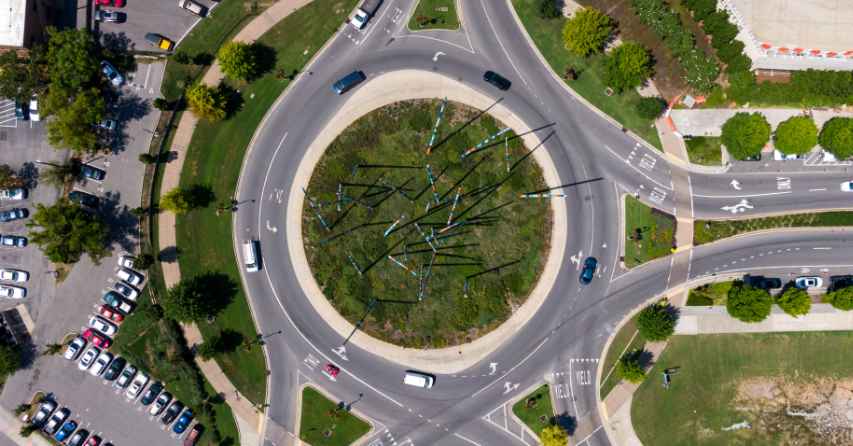
Have you noticed a new roundabout during your travels lately? Yes, one of those circular intersections we see on our roads that can cause fear and anxiety for so many drivers.
Although they began appearing in Ontario in the 1990’s, roundabouts have been around in other countries for quite some time. They were first introduced to American roadways in the 1930’s and in European countries afterwards.
These early concepts were a failure however, as they were actually dangerous and created excessive traffic congestion. Unlike today, vehicles that were entering the roundabout were given the right of way and the vehicles in the roundabout were expected to yield, resulting in traffic chaos.
In the 1960’s, this concept changed to a much safer approach when the Transport Research Laboratory in the UK developed the modern roundabout, which gave priority to vehicles within the circle. In 1966, this rule was made into law, and the USA and Canada began designing and building roundabouts to these standards in the late 1990’s. Today, there are over 500 roundabouts in Canada and over 10,000 in the USA.
It’s all about safety and traffic flow. The U.S. Insurance Institute for Highway Safety assessed several studies on intersections that were converted from signal lights or stop signs to roundabouts, and estimated that the number of crashes causing injuries fell between 72 to 80 per cent, and all collisions were down by 35 to 47 per cent. They also offer better traffic flow and management as they eliminate stop signs, traffic lights and left turn lanes that create backups in traffic.
Unfortunately, accidents do occur in roundabouts, and are usually caused by drivers who don’t understand or fail to follow the rules. It’s not uncommon to see drivers stopping before entering, entering the wrong way, backing up and not yielding to vehicles in the roundabout.
According to the Ministry of Transportation Ontario driver handbook, when approaching a roundabout, you should:
When entering, you should:
Once in the roundabout, you should:
When exiting, you should:
Still unsure how to travel thorough a roundabout? Check out this video from the City of Ottawa on How to Use a Roundabout.